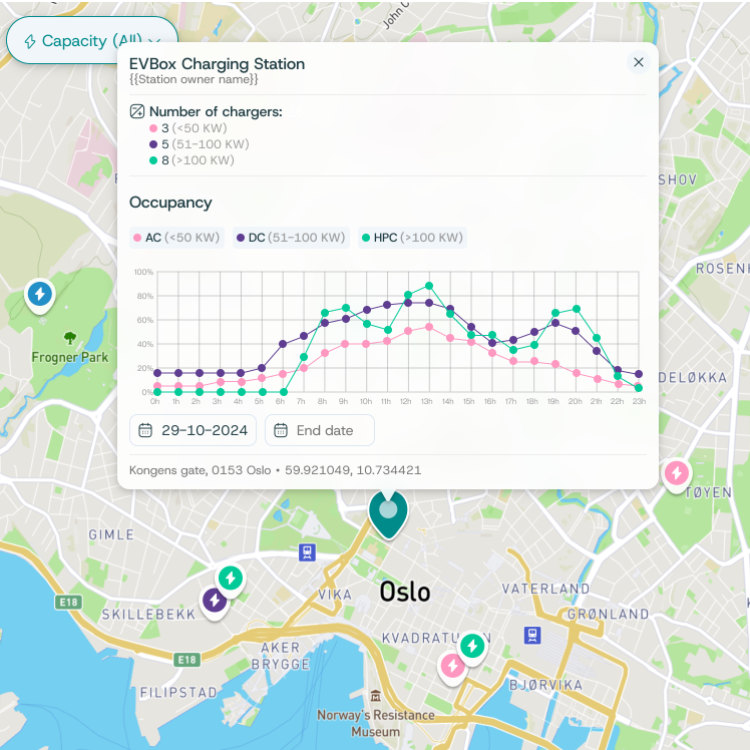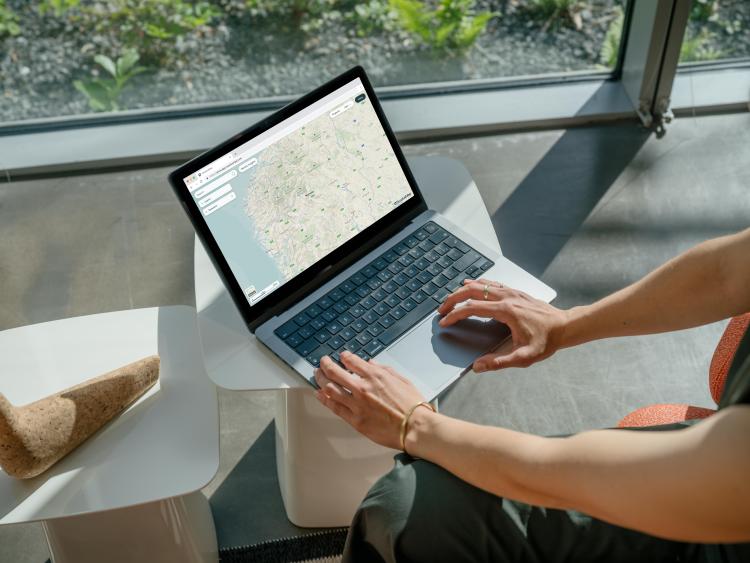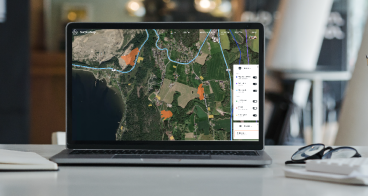Forecasting Oslo's EV charging and grid infrastructure needs

Oslo is ground zero for EV adoption & EV charging infrastructure deployment
The Challenge
The City of Oslo is a global leader in EV adoption and sustainable mobility, aiming for carbon neutrality by 2030. Despite its comprehensive EV charging network and the dominance of electric vehicles in new car sales, Oslo faces several key challenges. These include scaling infrastructure to meet rising energy demands, ensuring equitable charger access, and maintaining grid stability as electrification increases. In particular, the city and its departments face challenges in electrifying their fleets, such as optimising the use of non-public chargers, future-proofing infrastructure, accurately forecasting energy needs, and strategically expanding the network to maximise efficiency, reduce waste, and support long-term sustainable growth.
Key challenges for the city:
- Establish a baseline for grid load from non-public EV chargers to investigate energy distribution.
- Mapping non-public chargers and assessing their potential for shared use or integration into a future flex market.
- Identifying optimal locations for supplementary chargers, prioritizing both light and heavy-duty vehicles.
- Scaling and adapting infrastructure enhancements to align with future technological advancements.
The Solution
To address these challenges, Oslo’s Climate Agency partnered with SurplusMap, a solution leveraging AI-powered spatial intelligence and deep market insights. The collaboration aimed to enhance how the city plans and manages its EV charging infrastructure, ensuring it remains ahead of the curve.
The first step was unifying the city’s fragmented charger data. Public and non-public charger information was integrated into a single platform, enabling city departments to analyse trends and share resources. This streamlined approach not only improved efficiency but also helped reduce costs.
With AI-powered predictions, the solution provided insights into grid demand and infrastructure needs. Advanced load curves and intuitive decision-making tools equipped city planners with the ability to manage power demands, strategically deploy new chargers, and future-proof the system against rising usage.
Perhaps most impressively, the methodologies developed for Oslo were designed to be scalable. They addressed common challenges such as data harmonisation and accuracy, making it possible for other cities to adopt and benefit from similar solutions.
Oslo’s collaboration with SurplusMap is a shining example of how innovative technologies can help cities meet pressing challenges while paving the way for a sustainable future. The result is a smarter, more resilient EV charging network that not only meets today’s needs but also prepares for tomorrow’s growth.

Making an impact
The collaboration yielded substantial social, ecological, and operational benefits.
It enhanced accessibility to EV infrastructure, addressing the needs of commuters and businesses while promoting equitable access to sustainable energy solutions.
The solution reduced grid strain by optimising charger placement and load distribution, supporting Oslo’s carbon neutrality goals.
Additionally, the deployment of SurplusMap's tools enabled municipal agencies to make informed, data-driven decisions, leading to optimised charger deployment and reduced infrastructure costs.

EV charging infrastructure planning and deploy made easy
Lessons learnt
Deploying Oslo’s EV charging infrastructure highlighted key challenges and demonstrated SurplusMap’s ability to deliver effective solutions. Integrating diverse public and non-public datasets was a significant hurdle, requiring advanced technology, robust data pipelines, and collaboration. SurplusMap’s unified platform standardised data formats, creating a scalable model for other cities. Additionally, the unique characteristics of EV charging - such as varying usage patterns and grid impacts - were addressed through AI-powered tools, enabling site-specific analysis and optimised charger placement while maintaining grid stability.
Key lessons:
- Integrated data solutions: SurplusMap’s unified platform streamlined diverse datasets, enabling efficient planning and scalable frameworks for replication.
- AI-Powered optimisation: predictive analytics ensured strategic charger placement, balancing usage demands and grid stability.
- Collaborative frameworks: transparent communication and phased implementation fostered stakeholder alignment, building trust and achieving scalable results.
- Data privacy and compliance: SurplusMap implemented robust data anonymisation, compliance measures, and privacy protections to ensure secure handling of sensitive information while enabling actionable insights.






